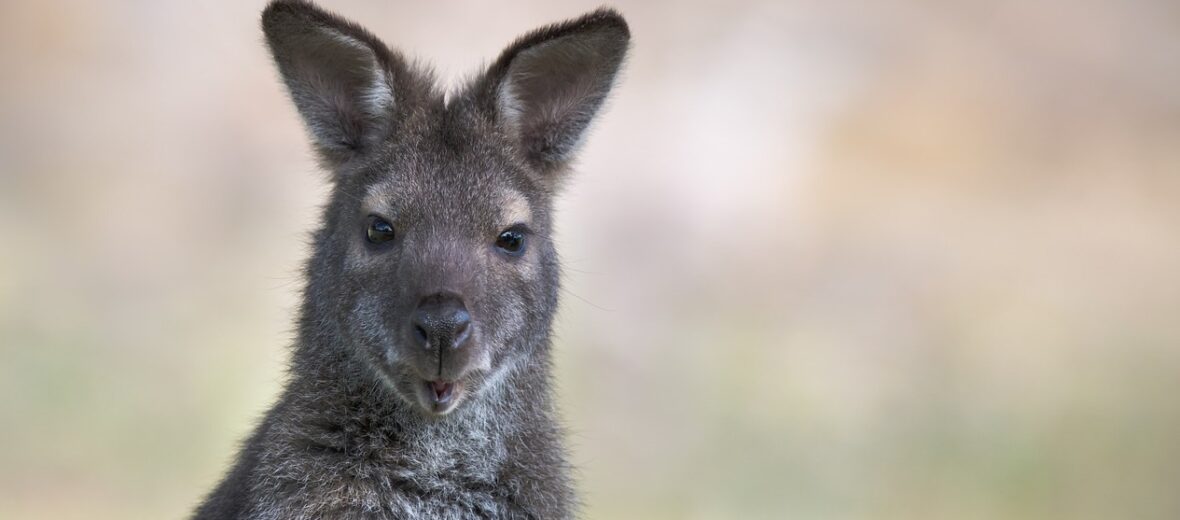
The wallaby, who’s closest relative is the kangaroo, is found throughout Australia and is not only cute but friendly as well. Like the kangaroo, wallabies are marsupials (carry their young in an abdominal pouch called a marsupium). There are many different known wallaby species, grouped roughly by habitats. There are shrub wallabies, brush wallabies, rock wallabies, hare wallabies (named for their size and their hare-like behavior), and more!
First the Stats…
Scientific name: Macropus
Weight: Up to 44 lbs.
Height: Up to 71 inches (including tail)
Lifespan: Up to 15 years
Now on to the Facts!
1.) Wallabies are herbivores (eat plants), eating grasses, fruits, seeds, and leaves.
2.) Canines such as dingos and foxes are the main predators of the wallaby, along with large reptiles such as crocodiles and snakes.
3.) They often use their powerful legs to kick predators and in battling for a female.
4.) There are between 1 – 4 young birthed. Typically just one joey is born.
5.) A female wallaby is called a doe, flyer, jill, or roo. A male is called a buck, boomer, jack, or old man.
But wait, there’s more on the wallaby!
6.) A group of wallabies is called a mob, a troop, a court, or a herd.
7.) And yes, the joey does poop and pee in the pouch. Like koalas. So, every once in a while, mom will have to clean out the pouch.
Did you know…?
Female wallabies have the awesome ability to produce 2 different kinds of milk at once. One type is for the younger joey and the other is for the more developed joey.
8.) The wallaby likes to swim and can hop up to 30 mph!
9.) When a wallaby senses danger, it takes up a frozen stance and then makes foot thumps (usually only 1 or 2 beats) to warn others of its herd of a potential threat.
10.) Fossils of macropods date back approximately 4 million years!
Now a Short Wallaby Video!
Also, check out the Critter Science YouTube channel. Videos added frequently!
Want to suggest a critter for me to write about? Let me know here.



